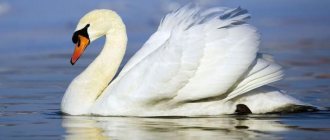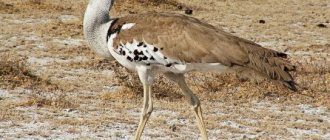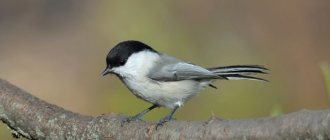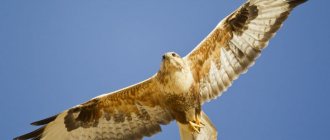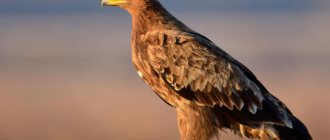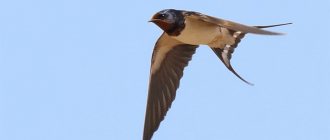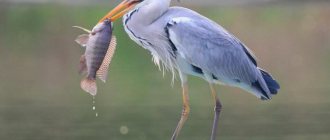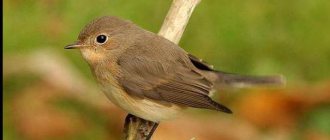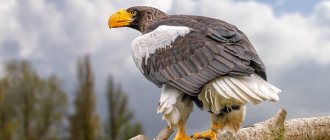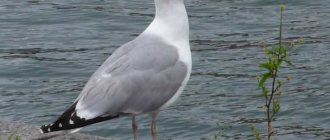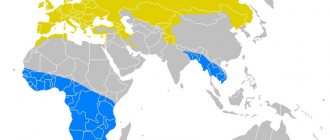Swans are beautiful waterfowl, the largest of all existing on earth at present. What types of swans exist and why each of them is interesting, we will tell you in our review.
There are currently seven species of swans: black, American, whooper, mute, black-necked, little and trumpeter. Males and females of the same species are almost the same size, so the untrained eye can hardly tell them apart. An interesting feature of all species is that swans almost always form monogamous pairs. The partners raise the cubs together, guarding them until the age of two years.
Black (Cygnus atratus)
Inhabits the entire southwestern part of the Australian continent, New Zealand and North America (mainly in nature reserves). The bird nests in swamps and river mouths, and also lives in captivity in zoos around the world. Despite its beauty and limited habitat, the black swan is not listed in the Red Book. Females are slightly smaller than males; both representatives of the species have black plumage and a red beak. Adults reach a weight of 9 kg and a length of up to 142 cm. In the wild, this species lives up to 10 years.
Characteristics of the bird
It is believed that the birds have a calm and peaceful character. They defend themselves only when their peace of mind is threatened - they hiss, flap their wings, threaten with their beaks. Once they are adopted by humans as chicks, they become tame and get along well with other domestic animals.
An important characteristic of these amazing creatures is their mutual devotion. It is called swan fidelity. Pairs are created once and for life. In addition, they recognize their chosen one among other individuals by external signs.
In life together, everything is done together:
- get food,
- raise chicks,
- take care of each other.
In this way, they serve as an example of integrity and reliability to all people.
Black-necked (Cygnus melanocoryphus)
The neck of a representative of this species is painted black, the rest of the body is snow-white, the beak is gray with a growth. The weight of an adult reaches 6.5 kg, length - up to 140 cm. The black-necked swan lives on small islands or in reeds, where it builds nests. In captivity, the life expectancy of individuals reaches 30 years, in the wild - up to 10. Males carefully guard the female while incubating eggs. Black-necked chicks are very active, often moving around while sitting on the back of their mother or father.
Mute swan (Cygnus olor)
One of the largest species, on a par with black. An adult representative of its species can gain weight up to 15 kg in park conditions and up to 13 in the wild. The wingspan is about 2.5 meters. The color is white, the head is ocher, the beak is red with a nail, the paws are black. The young have a brownish color, gradually giving way to white by the age of 3. You can recognize the mute fish by its dense neck in the shape of the Latin letter “s”.
Tu-160 Photo
According to NATO classification, these strategic bombers are called “Black Jack”, and in American slang they are called “bludgeon” (Black Jack - to beat with a baton). But our pilots called them “White Swans” - and this is very similar to the truth. Supersonic Tu-160s are beautiful and graceful, even with formidable weapons and amazing power. The weapons chosen for them were Kh-55 - subsonic small-sized cruise missiles and Kh-15 - aeroballistic missiles, which were placed on multi-position installations under the wings.
The Tu-160 prototype was approved at the end of 1977, and the experimental production enterprise MMZ “Opyt” (in Moscow) began assembling three prototype aircraft. Kazan production manufactured the fuselages, the wing and stabilizer were made in Novosibirsk, the cargo compartment doors were made in Voronezh, and the landing gear supports were made in the city of Gorky. The assembly of the first machine “70-01” was completed in January 1981 in Zhukovsky.
The Tu-160 with serial "70-01" was first tested in the air in 1981 on December 18. During state tests, which ended in mid-1989, the Tu-160 aircraft fired four Kh-55 cruise missiles as the main armament of the aircraft. The maximum speed of the aircraft during horizontal flight was 2200 km/h. This speed for operation was limited to 2000 km/h - this was introduced due to the condition of the resource limit. Many Tu-160s were given personal names, like warships. The first Tu-160 was named “Ilya Muromets”.
Tu-160 crew: 4 people.
Engines: (turbine) four NK - 32 TRDDF 4x14,000/25,000 kgf (thrust: working / afterburner).
The unit is three-shaft, dual-circuit, with an afterburner. It is started by an air starter.
Behind the left support of the main landing gear is the APU - an electrical engine control system with hydromechanical duplication
.Weight and loads: normal take-off - 267600 kg, empty aircraft - 110000 kg, maximum combat - 40000 kg, fuel - 148000 kg.
Flight data: 2000 km/h - flight speed at altitude, 1030 km/h - flight near the ground, from 260 to 300 km/h - landing speed, 16000 m - flight ceiling, 13200 km - practical range, 10500 km - duration flight at maximum load.
Salon
Tu-160 is one of the USSR combat aircraft, which the press learned about before its construction, several years ago. In 1981, on November 25, the aircraft was prepared for testing in the town of Zhukovsky (Ramensky) near Moscow. The car was parked alongside two Tu-144s and was photographed by a passenger from a plane landing at the nearby Bykovo airfield. From that moment on, the bomber received its nickname “Ram-P” (Ram - from Ramenskoye) and the NATO code - “Black Jack”. With this name, the heaviest bomb carrier of all time was introduced to the world.
Whooper swan (Cygnus cygnus)
A large bird with a weight reaching up to 12 kg. The wingspan is about 2.4 meters, the body is at least 155 cm long, the neck and body are approximately the same length. A distinctive feature is a lemon beak, black at the end. The color of the bird is white, however, young swans of this species are gray with a dark head. The neck is always kept straight, not bent like a mute dog. They form pairs for life, with the male often remaining alone for the rest of his life if the female dies, and vice versa. In captivity, the lifespan of the whooper reaches up to 30 years.
Reproduction and offspring
Swans return in the spring from their wanderings in early spring, when the snow has not yet melted, and the reservoirs where they are accustomed to nest are still covered with a thin crust of ice. In the south this happens already in mid-March, but these majestic birds return to the north only at the end of May. Swans arrive at nesting sites in pairs, having found a permanent partner during the winter.
Due to their inherent monogamy, swans remain faithful to one partner for the rest of their lives and, if something happens to that partner, they will no longer look for a new pair. Previously, there was a belief that a swan, having lost its girlfriend, would not be able to live without her and would die of grief. But at present, such legends are considered unproven due to the fact that ornithologists have not recorded a single similar fact.
After arrival, a pair of swans occupies an area previously chosen by the birds and begins to build a large nest, up to three meters in diameter, that looks like a floating pile of branches, tree branches, reeds and coastal grass.
At the same time, they zealously protect the territory from the invasion of their fellow tribesmen: because of this, fierce battles often occur between swans, when birds with loud screams collide with their chests in the water, without ceasing to flap their wings and forcefully beat each other with them.
After the nest is built, the female lays several eggs in it and incubates them for an average of 40 days . All this time, the male guards the clutch and warns the female of danger. If something really threatens the swan couple, then they fill the nest with fluff, and they themselves soar into the air and, waiting until the danger passes, circle around it.
People who accidentally stumble upon a nest or chicks of a swan should quickly leave the territory of these birds, since if he does not do this, they will fight desperately, protecting their offspring and at the same time using their powerful wings and strong beak, which can lead to serious injury and even death to the unwitting trespasser.
Little swans hatch and are quite ready to move independently and eat food. Adult birds take care of them for about a year. The chicks, under their supervision, get their own food in shallow water; they also often bask under their mother’s wings or climb onto her back.
The entire brood, together with its parents, leaves for the south in the fall, and in the spring, as a rule, the whole family also returns back to the nesting sites. Young swans mature slowly and reach sexual maturity only at four years of age.
Trumpeter swan (Cygnus buccinator)
The trumpeter is similar in appearance to the whooper, but its beak is completely black. The plumage is white, body weight reaches 13 kg, and length up to 180 cm. At the end of spring, the breeding season begins for trumpeters, and the female sits on the nest for exactly a month. In total, during the incubation period, she is able to lay 9 eggs. In captivity, trumpeters live up to 30 years, in the wild - up to 10.
Today, these beautiful birds are a symbol of spiritual purity, purity and marital fidelity. Swans are capable of causing admiration not only for their beautiful plumage, but also for their incredible posture.
2. Swans belong to the order Anseriformes of the Anatidae family.
3. Swans are distinguished by their beauty, long life span and monogamy.
4. Swans are the largest waterfowl in Europe.
5. Depending on the species, the body length of adult individuals reaches 120-180 cm, and the weight can reach up to 15 kg. The wingspan of these birds is about 2-2.4 meters.
6. These birds do not like to walk on land, but mainly move on water.
7. There are 7 species of swans in the world: black swan, black-necked swan, whooper swan, mute swan, American swan, small swan, trumpeter swan.
8. Most of the species of these birds are listed in the Red Book.
9. The male and female are not much different from each other. The white swan is one of the largest waterfowl, differing in size and weight, which reaches 10-13 kg. Its body is elongated, long (about 150-170 cm), its neck is long and looks very elegant. The strong wings have a span of almost 2 meters, the legs are short, dark in color, and located slightly behind. The beak is gray or black and yellow.
10. There are many beliefs about swans and their fidelity to their partner until the end of their lives. But one thing is certain: the swan is a monogamous bird and, having created a pair, it remains nearby as long as the companion is alive. But having become a widower, the male or female will create a new pair, and will not remain a hermit until death.
mute swan
11. The mute swan shows its irritation and dissatisfaction with a special hissing sound, which is where its name comes from. In England, the mute bird is considered the royal bird. This is a large breed that can weigh up to 12 kg, and in captivity - up to 15 kg. The color of the plumage is white, and the head is buffy. The beak of this species is red with a marigold. It curves its neck when swimming through the water, unlike other breeds that hold their neck straight. Juveniles up to 3 years old are brown in color, but then they turn white. The lifespan of a mute swan can be up to 28 years. This species is found in the northern and southern parts of Europe and Asia.
12. The swan looks beautiful due to the fact that its body is covered with very thick plumage. And few people know that the number of feathers is 25 thousand units. This bird is a record holder, but during seasonal molting it loses a lot of feathers and cannot fly for some time.
13. Among the duck family, swans have the longest necks. At the same time, the record holder among its relatives is the black swan, the cervical region of which consists of 23 vertebrae and reaches half the length of the individual’s body. Such an impressive neck size allows these birds to obtain food at the depths of reservoirs.
14. Swan down has amazing thermal insulation, which allows birds to withstand the cold well. But this property became the reason for their mass extermination in medieval times.
15. Excellent muscles enable amazing birds to overcome flights of a thousand or more kilometers. Swans fly, forming a wedge, which is headed by the strongest individual. The aerodynamic flows created by the leader of the pack allow its other members to expend less energy. At the same time, swans can reach speeds of up to 80 km/h.
Whooper swan
16. The whooper swan makes a characteristic loud cry during flight. This bird can weigh about 12 kg and reach a length of 150 cm, and its wingspan is sometimes up to 2.6 meters. The neck and body are approximately the same size. The beak is yellow with a black tip. Juveniles are gray in color, but later turn white. This breed of swan nests in northern Europe and some parts of Eurasia. It settles on the banks of lakes and rivers. The whooper swan builds its nest from grass, moss and feathers. A couple is formed once and for life. In captivity, it lives for about 30 years.
17. The whooper swan is recognized as the national bird of Finland.
18.Swans have excellent vision, which helps them find food and avoid enemies, including under water.
19. Thanks to their thick and warm plumage, swans can fly at a record altitude for birds. Back in the 60s of the 20th century, pilots recorded the flight of several individuals at an altitude exceeding 8200 meters.
20. At the tip of the tail of swans there is a special gland that secretes fat to lubricate the feathers. Thanks to this, birds can swim in water for a long time without getting wet.
Trumpeter Swan
21. The trumpeter swan got its nickname thanks to the screams it makes when communicating with other individuals. This breed is found in Central America. It looks like a whooper, but its beak is black instead of yellow. Body weight is up to 13 kg, and length is up to 180 cm. In captivity, it can live for about 30 years.
22. Swans treat not only their partner, but also other relatives with care. In cases of illness of one of the members of the flock, the birds may even postpone their flight until the individual recovers.
23. The migration of swans is seasonal and it extends to the territory of Russia. Thus, more than three hundred swans arrive annually at the lakes in the Altai Territory.
24. Swans settle in shallow water and choose hard-to-reach places for nests. They prefer heavily overgrown ponds. If they are not disturbed, they can settle close to people.
25. Ornithologists have found that the color of the plumage of swans largely depends on their habitat. As a rule, birds in warm climates are darker in color than in cold climates. Therefore, in the northern regions you can find perfectly white individuals.
Black-necked swan
26. The black-necked swan owes its name to its color. Their head and neck are black and their body is white. The black-necked beak has a red growth on its beak, which is not found on juveniles. An adult can have up to 6.5 kg of body weight and up to 140 cm in length. This breed can be found in South America. It makes nests on small islands or in reeds. Chicks of this breed love to travel on the backs of their parents.
27. Black-necked swans can fly at a speed of 65 km/h.
28. Swans feed on the roots and stems of plants growing in bodies of water. Large breeds may feed on worms, snails or insects. Small species eat grass, often damaging cereal crops.
29. Large body mass prevents birds from taking off easily, so they have to flap their wings and move their paws for a long time in order to rise to the desired height. For the same reason, swans sit only on the water, clumsily braking with their paws on its surface.
30. A female swan lays, as a rule, from 4 to 8 eggs, which she incubates for 35 days.
Black swans
31. The black swan also received this name due to the black color of its feathers. Found mainly in Australia. This species lives in swamps or overgrown lakes, but it can also be found in the zoo. Adults weigh up to 9 kg and their length reaches 142 cm. Life expectancy in the wild is up to 10 years. By nature, he is very trusting and easy to tame.
32. The black swan is the emblem of Western Australia.
33. While studying black swans, ornithologists witnessed an unusual phenomenon. Males of these birds are capable of creating same-sex unions. In this case, birds use the female to lay eggs. After this, the male black swans drive her out and hatch and raise the offspring themselves.
34. Chicks of swans are born fluffy and, regardless of the species, have a gray color, which changes only in the third year of the bird’s life.
35. Just a few days after birth, swans can swim independently with their parents.
American swan
36. The American swan is the smallest in size. Its weight rarely reaches 10 kg. Outwardly, he looks like a whooper. Lives in the tundra forests of America.
37. Swans have very friendly and strong “families”. After the chicks grow up, they can live with their parents for a very long time.
38. In case of danger, a swan with a strong blow of its wing can cause significant harm to the enemy: break a bone and even kill a small predator.
39. When creating a pair, a swan lives a long time, showing parental qualities and caring not only for the eggs, but for the growing babies, protecting them and getting them food.
40. In the presence of babies, birds fiercely protect their offspring and become restless and aggressive.
Lesser or tundra swans
41. The small swan is sometimes also called the tundra swan, as it is found in the tundra of Russia. Reminiscent of the American species in its characteristics. In captivity, it lives no more than 20 years. Listed in the Red Book of the Russian Federation.
42. Swans are more often found in the northern hemisphere. Although they often choose New Zealand, Australia and South America as their places of residence.
43. During cold weather, swans fly to warm countries, and when spring comes, they return. The female builds a nest in the thickets, and the chicks appear by mid-summer.
44. Baby swans are born feathered and can immediately get their own food. The female stays with the swans for about 6 months until they are fully grown.
45. People predicted the weather based on the behavior of swans. For example, it is believed that if a swan begins to throw its head over its back during the day, bad weather will occur. Birds build nests at higher elevations - expect heavy rains.
46. Juveniles have a pink beak, the tip of which is painted black. A swimming bird has a neck stretched vertically upward, while its head and beak look forward.
47. Sometimes you can meet pairs of swans that live close to a person’s place of residence. This may mean that the birds are fed and treated very well.
48. According to legends, swans can live up to 150 years, but this is not true. According to studies conducted by ornithologists, the average life expectancy of these birds in the wild is 20–25 years. In captivity they can live up to 30.
49. The reproduction and conservation of swans primarily occurs in nature reserves, but this is also possible in natural conditions, as on the River Thames. In Britain, all swans belong to the Queen and their capture is prohibited.
50. A symbol of a long married life is a pair of white swans; they are often used to decorate cakes and wedding tables.
photo from the Internet
American (Cygnus columbianus)
The smallest representative of all species. Its dimensions do not exceed 146 cm in length, and its weight reaches 10 kg. It looks like a whooper, but its neck is shorter, its size is more modest, and its head has a rounded shape. The beak is yellow with an admixture of black. When the female incubates the nest, the male jealously protects her. American swans nest on the outskirts of reservoirs and in mossy areas of the tundra. Life expectancy in captivity is about 29 years.
Small (Cygnus bewickii)
Externally it looks like a whooper, body length – 140 cm, wingspan – 200-210 cm, beak short, yellow-black. Feature: the pattern on the beak is individual for each individual of the same species. Endemic to Russia, in particular to Chukotka and the Kola Peninsula. Its characteristics are similar to the American tundra. Lifespan in captivity is up to 20 years. A rare bird, included in the Red Book of the Russian Federation.
Classification
Animal or bird
The swan is a migratory waterfowl.
According to the scientific classification, these birds belong to:
- Kingdom - Animals.
- Tipu - Chordata.
- Subphylum Vertebrates.
- Class - Birds.
- Superorder - New palatines.
- Order - Anseriformes.
- Family - Ducks.
- Subfamily - Goose.
- Rodu - Swans.
How is a goose different from a swan?
These birds belong to the same order of birds, but they are very different:
- Appearance. The swan is more graceful and majestic than the goose, the contours of its body are curved.
- Neck length. The swan's neck is longer and more graceful. This is caused by natural necessity - a goose can find food on land, a swan is more strongly attached to a body of water.
- Dimensions. The goose is much smaller. Even a medium-sized swan with its enormous wingspan is a giant compared to a goose.
- Taming. Geese are more suitable for keeping at home, and their relatives are freedom-loving birds.
- Sounds. Each bird makes its own unique sounds.
- Reproduction. Swans are monogamous animals, they are very attached to their mates. Geese are polygamous and create a new family every season.
Interesting Facts
- Birds have a bad temperament, they are timid and do not approach people well.
- They love to move on water, but are clumsy on land.
- In Britain, the capture of swans is prohibited by law, and all birds of these species are considered the property of the royal family.
- Sometimes black swans can create homosexual couples. After laying an egg, such a couple may even expel the female in order to incubate the egg in turns.
- The warmer the region where it lives, the darker the color of the bird.
- These birds are wonderful parents. They nurse their babies until they are 2 years old, helping them get their own food and taking care of them.
- An adult bird can attack a person and even break his bone.
Range, habitats
Most species of swans live in temperate climates and only a few of them can live in the tropics. These birds live in Europe, some Asian countries, America and Australia.
Swans do not live in tropical Asia, northern South America or Africa. On the territory of Russia they are found in tundra zones and, much less frequently, in forest zones. To the south, their range extends from the Kola Peninsula to the Crimea and from the Kamchatka Peninsula to Central Asia.
Some of the swan species have been declared national treasures. For example, whooper in Finland and mute in Denmark. The latter, in addition, in Great Britain are considered the personal property of the queen, and only members of the royal family are allowed to use the meat of these birds for food.
The favorite habitats of swans are large lakes, overgrown with reeds and other aquatic vegetation along the shores. Sometimes they can settle on the sea coast if there are reed beds nearby.
If people treat these birds with respect and are not too annoying, they can settle in ponds near populated areas. With some exceptions, swans are migratory birds. But sometimes they can remain in their nesting areas. For example, whoopers sometimes spend the winter in the ice-free straits of the White and Baltic Seas.
